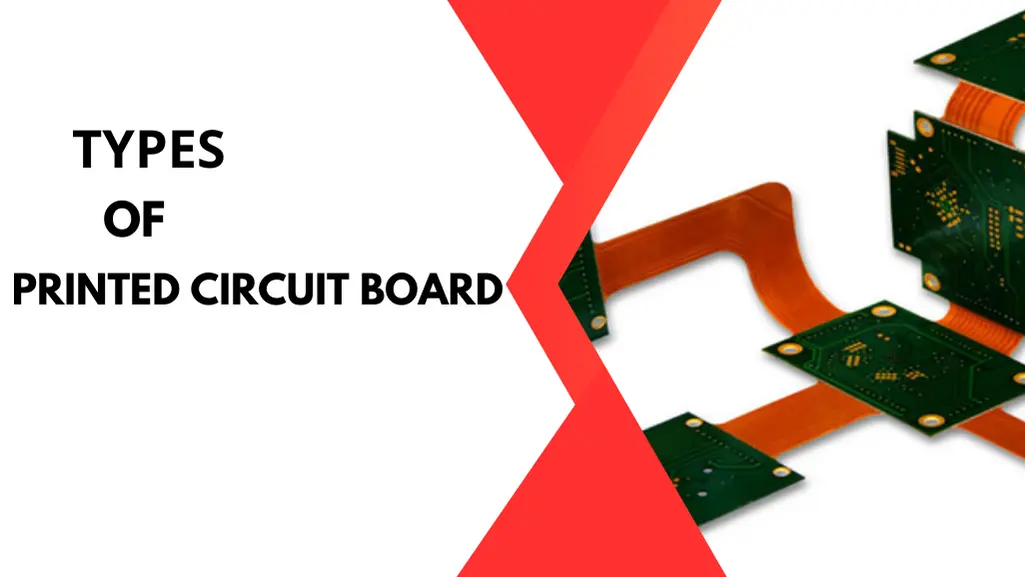
Our world is full of electronic gadgets and amazingly each requires a most important component to run the machine smoothly: a printed circuit board. There are different types of PCBs. Each PCB meets the particular needs of any device. For example, for simple devices, single-layer PCB is the best choice and it is less expensive too. Subsequently, rigid-flex and multilayer PCB boards are good for advanced components.
Also read: What Is A PCB Board? PCB Design & Types
PCB manufacturers around the globe meet specific needs and applications of a particular electronic product. The simplest PCBs feature just one layer of conductive material, which is perfect for devices with low power consumption. In comparison to single-sided PCBs, double-sided PCBs have two conductive layers, making them more versatile.
With their multiple conductive layers, multilayer PCBs provide a unique combination of PCB board design, making them perfect for the most complex PCB board design.
Types of Printed Circuit Boards
There are six different types of printed circuit boards:
- Single Sided PCB
- Double PCB
- Multilayer PCB
- Rigid PCB
- Flex PCB
- Rigid-Flex PCB
Single sided board
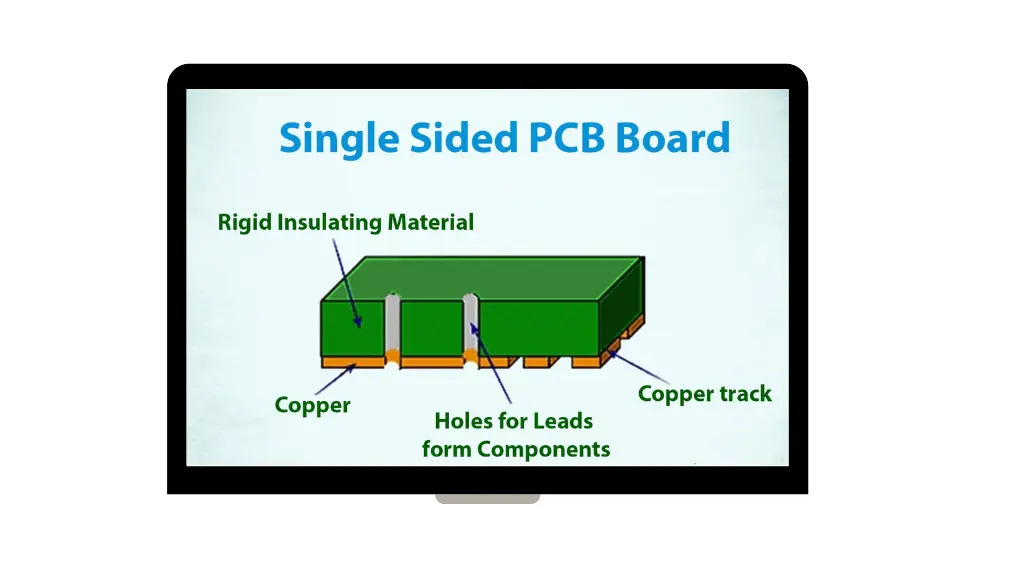
In types of PCBs, single-layer boards come on the top. Since the wiring is only on one side, it is not possible to manufacture complex circuits where the wiring intersects on a single-sided board.
A single-sided board is one in which wiring is applied to only one side of the board. Since wiring patterns can only be formed on one surface, it is difficult to design complex circuits, but mass production is possible at a correspondingly lower cost.
Application Of Single Sided PCB
- Simple Electronics such as calculators, toys, and LED lighting.
- Basic automotive components, such as dashboard controls.
Double-Sided Board

On double-sided types of PCBs, we have printed designs on both sides. Ultimately, it allows higher-density wiring than on a single-sided board.
A double-sided board is a board with wiring patterns formed on both sides of the board. Also called a two-layer board, electronic components can be mounted on both sides, making it possible to design higher-density, three-dimensional circuits with intersecting wiring.
Applications Of Double Sided PCB
- Smartphones, televisions, printers, and computer peripherals.
- Control panels, power supplies, and instrument devices.
- Vehicle alarms, engine control units (ECUs), and in-car entertainment systems.
Multilayer board

Multilayer takes third position in types of PCBs. Since there are many wiring layers, the image of a multilayer board is that of an apartment. In PCB manufacturing, we achieve high density by creating a layer for internal wiring.
A multilayer board is made by stacking four or more layers of insulators and patterns alternately to form a single board. Because wiring can be placed inside the board, it is used in electronic devices such as computers that require a lot of wiring.
Application Of Multilayer PCB Board
- Computing devices, servers, and data storage systems.
- Routers, network switches, and satellite systems
- MRI machines, pacemakers, and advanced diagnostic devices.
- Radar systems, satellite communication, and missile guidance systems.
Differences Of Single, Double, and Multilayer PCB Board
| Feature | Single Layer PCB | Double Layer PCB | Multilayer PCB |
| Complexity | Simple | More complex | Very complex |
| Power handling | Low power | Higher power | Highest power |
| Versatility | Low | Medium | High |
| Cost | Low | Medium | High |
Rigid PCB
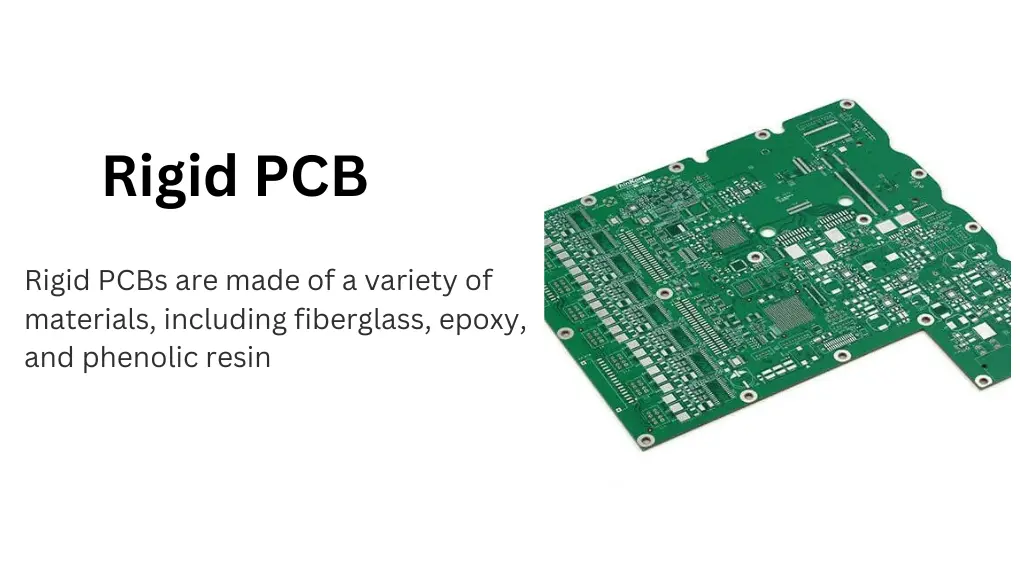
There are different types of PCBs according to their materials. A rigid board uses a hard insulating base material and is not flexible. Similarly, the wiring board is hard and we can easily apply it to the equipment.
We can say that a rigid board makes it easy to mount components. Additionally, we can classify rigid PCB as follows depending on the material of the insulator base material.
1. Glass epoxy substrate
A glass epoxy board has impregnated epoxy resin into cloth woven with glass fibers. Similarly, most of the printed circuit boards have one of the highest consumption these days. They not only have high insulation properties but also have excellent:
- Durability
- Heat resistance
- Flame resistance.
However, the disadvantages are that it is expensive and difficult to process.
2. Paper phenol substrate
The paper phenolic substrate has a paper-impregnated substrate with phenolic resin. Generally, we use it as a single-sided substrate. It is the oldest printed circuit board. Subsequently, it is cheap and easy to process.
Simultaneously, it has poor durability and electrical characteristics. Hence, we cannot use it in the safety equipment.
3. Glass polyimide substrate
A glass polyimide substrate is a substrate made of glass fiber cloth impregnated with polyimide resin. It has high durability, heat resistance, and insulation properties. Furthermore, we use it for equipment that requires heat resistance.
4. Teflon substrate
A Teflon board has glass cloth impregnated with Teflon. It is:
- Nonflammable
- Has very high chemical stability
- Similarly, it does not easily absorb moisture
Hence, we use it in components where we need high performance.
In addition, the Teflon printed circuit board has a low dielectric constant and dielectric loss tangent and has excellent high-frequency characteristics. Moreover, the disadvantages include high prices and complex PCB manufacturing processes.
Flexible PCB
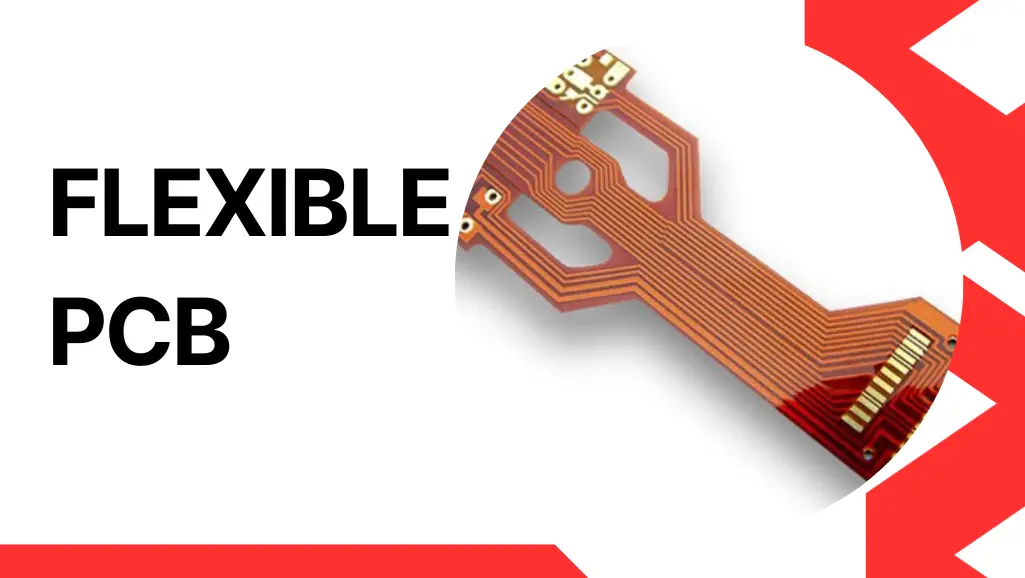
A flexible substrate is a base material made of polyimide. Basically, it is thin and flexible, which makes this board highly demanding. In addition, it has a high degree of PCB manufacturing freedom. Since it consumes a little space, it is ideal for smaller devices, such as smartphones.
However, when mounting components, a pallet is compulsory to secure the board. The disadvantage is that this increases the initial cost and makes it unsuitable for mass production.
Rigid Flex PCB
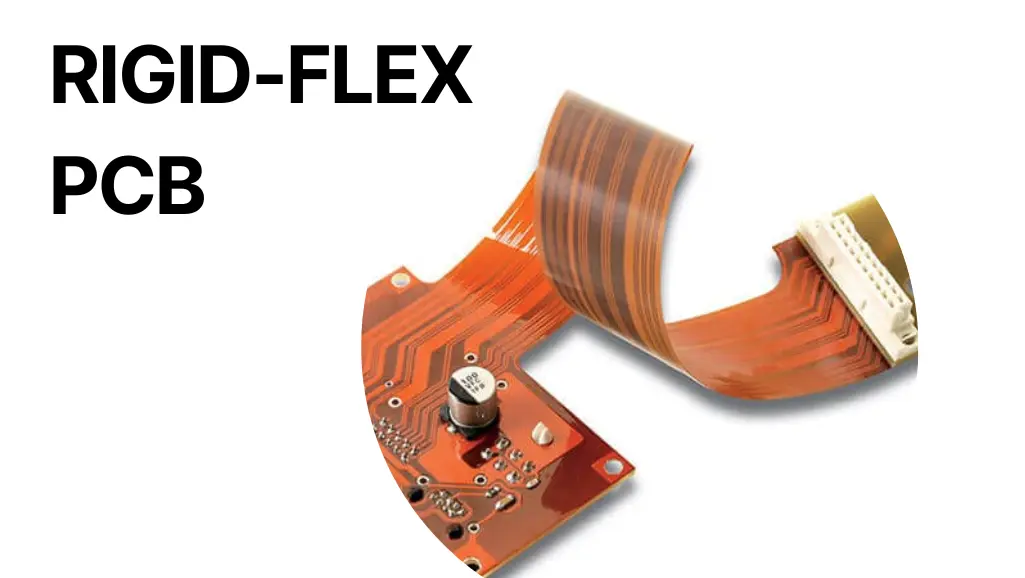
A rigid-flex PCB is a composite board of a rigid board and a flexible board. Generally, these properties make rigid-flex boards easy to mount components and have excellent flexibility. Although its PCB board design is complex and costly, it delivers excellent performance.
Types Of PCBs According To The Mounting System
We divide printed circuit boards into through-hole PCBs and surface-mounted PCBs.
1. Through-hole PCB
It is a type of printed circuit board that has holes drilled through it to connect components. The holes are usually plated with copper or tin to allow electrical connections. We use such circuit boards PCBs from simple consumer electronics to complex medical devices.
This technology is reliable for mounting the components. However, drilling in the PCB increases the cost. With single-layer PCB, this installation technology is very easy to do, but with 2-layer and multi-layer PCB, it is more difficult.
2. Surface mount PCB
In these types of PCBs, the components are small in size because their pins are very small or no pins need to be installed on the board. SMD components are mounted directly to the surface of the board and do not require making holes in the board.
What are PCB boards made of?
PCB manufacturers can make printed circuit boards to meet a variety of demands. In addition, these boards come with different materials. For instance, the choice of materials also depends on PCB board design. We can see several devices that use rigid PCBs, while gadgets like smart watches come from flexible PCBs.
They are the stalwarts of electronics. There are also rigid-flex PCBs, the chameleons of the PCB world. They seamlessly transition from rigidity to flexibility, enabling them to meet even the most demanding applications.
The main component is a rigid or flexible dielectric sheet. Circuit board PCB manufacturers use this plate with a conductive material such as copper located on top. Furthermore, dielectric panels are glass epoxy coatings or composite materials.
1. FR4
Among the types of PCBs produced, the most common glass cladding material is FR4. Based on epoxy-glass compounds, FR4 is the most used composite material because it provides very good mechanical strength.
2. FR-1 and FR-2
FR-1 and FR-2 have paper and phenol and it is ideal for single-layer printed circuit board. Both FR1 and FR2 have similar characteristics, but the significant reason is transition temperature. Similarly, we also divide these materials into standard, halogen-free, and hydrophobic types.
3. CEM-1
Generally, CEM-1 is green and yellow in color. CEM-1 circuit board PCBs use paper impregnated with epoxy resin. While it is easy to manufacture and is a low-cost material, it is not as strong or durable as FR-4. Subsequently, CEM-1 PCBs are commonly ideal for consumer electronics and toys.
4. CEM-3
CEM-1 is made from cellulose paper impregnated with epoxy resin. Although CEM-1 is a low-cost, easy-to-manufacture material, it doesn’t have the same strength as FR-4.
Summary
However, the world of a printed circuit board doesn’t stop there. PCB manufacturers are working on more powerful circuit boards PCB that are tailored to specific challenges and environments. making them ideal for wearable devices and other flexible applications.
Kingsun PCB can manufacture different types of PCBs, including rigid PCB, flexible PCB, or rigid-flex circuit board PCB. We offer advanced PCB board design with high precision.
